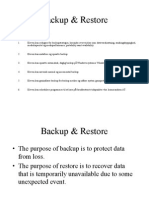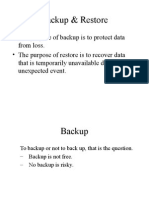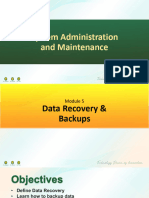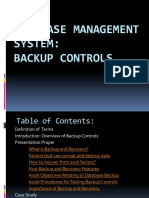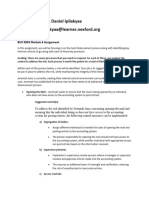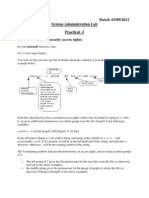0% found this document useful (0 votes)
31 views3 pagesBackup Management Lecture Note
Backup management is essential in system administration, focusing on planning and executing strategies to ensure data recovery from failures or attacks. Key components include choosing backup types, scheduling frequency, selecting storage media, and conducting restoration tests, with the 3-2-1 rule recommended for data safety. Automation of backups enhances reliability and reduces human error, while regular testing ensures that backup systems function as intended.
Uploaded by
Kelechukwu AjokuCopyright
© © All Rights Reserved
We take content rights seriously. If you suspect this is your content, claim it here.
Available Formats
Download as DOCX, PDF, TXT or read online on Scribd
0% found this document useful (0 votes)
31 views3 pagesBackup Management Lecture Note
Backup management is essential in system administration, focusing on planning and executing strategies to ensure data recovery from failures or attacks. Key components include choosing backup types, scheduling frequency, selecting storage media, and conducting restoration tests, with the 3-2-1 rule recommended for data safety. Automation of backups enhances reliability and reduces human error, while regular testing ensures that backup systems function as intended.
Uploaded by
Kelechukwu AjokuCopyright
© © All Rights Reserved
We take content rights seriously. If you suspect this is your content, claim it here.
Available Formats
Download as DOCX, PDF, TXT or read online on Scribd
/ 3














